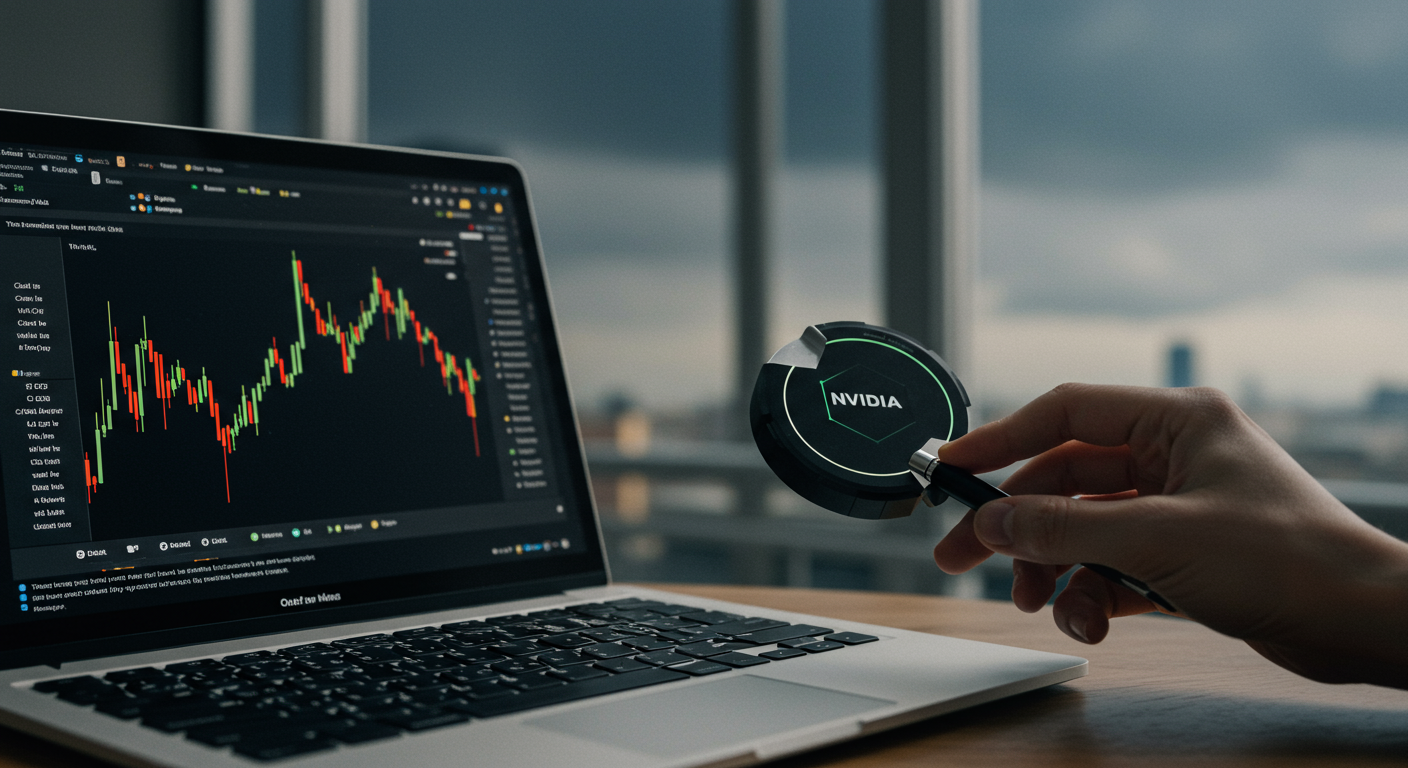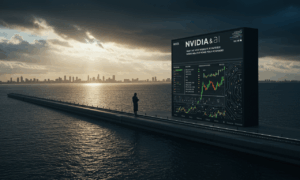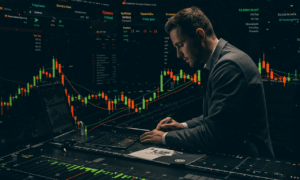An investment story for the history books is unfolding right before our eyes, and it centers on a company that has become a household name in the world of technology: Nvidia. In a stunning market development, the chipmaker has surged to become the most valuable public company in the world, eclipsing even tech titans like Microsoft and Apple. This monumental shift isn’t just a headline; it’s a signal about where technology is headed and carries significant implications for investors, the stock market, and even your own retirement accounts. This article will break down exactly what happened, why it’s so important, and what it means for anyone interested in the financial markets.
We’ll explore the data behind this incredible rise, explain the core concepts in a way that everyone can understand, and look at the bigger picture for the global economy. Let’s dive into the story of Nvidia’s coronation as the king of the market.
What Just Happened? The Data Behind the Headline
In mid-June 2024, Nvidia’s total market value soared past $3.3 trillion, allowing it to overtake the long-standing leaders of the market. To understand the magnitude of this achievement, we need to talk about a key concept: market capitalization.
So, what is it? Simply put, market capitalization (or “market cap”) is the total dollar value of a company’s outstanding shares of stock. You calculate it with a straightforward formula:
Current Share Price x Total Number of Shares = Market Capitalization
Think of it as the theoretical “price tag” to buy the entire company on the open market. For Nvidia to reach a market cap of over $3.3 trillion, it means the collective value of all its shares is higher than the annual Gross Domestic Product (GDP) of countries like the United Kingdom or France. This meteoric rise is underscored by its stock performance; the company’s value has multiplied several times over in just the last couple of years, a rate of growth rarely seen for a company of its size.
The Driving Force: Why Nvidia? Why Now?
The single biggest reason for Nvidia’s incredible ascent can be summed up in two letters: AI. The explosion of Artificial Intelligence, from generative AI like ChatGPT to complex data analysis models, has created an insatiable demand for a very specific type of hardware: high-performance graphics processing units, or GPUs.
While originally designed to render graphics for video games, Nvidia’s GPUs turned out to be perfectly suited for the massive parallel processing required to train and run AI models. This put the company in an incredibly powerful position. They are not just a player in the AI boom; they are effectively selling the essential tools needed to participate in it. This is a classic example of a “picks and shovels” investment strategy. During the 1800s gold rushes, the people who often made the most reliable fortunes weren’t the prospectors, but the merchants who sold them the picks, shovels, and supplies. In today’s AI gold rush, Nvidia is the premier seller of the digital “shovels.”
This has translated into jaw-dropping financial results. The company has been consistently reporting quarterly revenue and profit figures that shatter analyst expectations, driven by overwhelming demand from cloud computing providers and AI developers worldwide. This demonstrated profitability is what has given investors the confidence to push its stock, and therefore its market cap, to these historic heights.

Market Concentration: What This Means for Your Index Funds
Nvidia’s dominance has a major ripple effect across the entire stock market, particularly concerning the concept of market concentration. Major stock indexes, like the S&P 500, are “market-cap weighted.” This means that the largest companies, like Nvidia, Microsoft, and Apple, have a much bigger influence on the index’s performance than smaller companies.
What does this mean for the average investor? Many people invest through passive index funds or Exchange-Traded Funds (ETFs) that track the S&P 500. It is a cornerstone of modern investment strategy. If you own one of these funds, you are a part-owner of Nvidia, whether you specifically bought its stock or not. As of mid-2024, Nvidia’s weighting in the S&P 500 has become substantial.
This has two main implications:
- A Rising Tide: Nvidia’s incredible performance has been a primary driver of the S&P 500’s positive returns over the last year. Your 401(k) or brokerage account has likely benefited significantly from this single company’s success.
- A Concentration Risk: On the other hand, it also means the market’s health is increasingly tied to the fortunes of a small handful of “mega-cap” tech stocks. If Nvidia or another one of its giant peers were to face a significant downturn, it could pull the entire index down with it. This lack of diversification at the top of the index is a risk that all investors should be aware of.
A Quick Word on the Recent Stock Split
Adding another layer to this story, Nvidia recently completed a 10-for-1 stock split. This is a topic that often confuses new investors, but the concept is quite simple. A stock split does not, by itself, change the value of the company.
Imagine you have one pizza cut into 4 large slices. A stock split is like taking that same pizza and cutting it into 8 smaller slices. You still have the same amount of pizza, but it’s divided into more, smaller pieces. In Nvidia’s case, for every one share an investor held, they received ten new shares, with the price of each new share being one-tenth of the pre-split price. The total value of their holding remained the same at the moment of the split.
Companies do this for a couple of reasons:
- Accessibility: A lower share price (e.g., $120 instead of $1,200) makes the stock more psychologically and financially accessible to retail investors who may not be able to afford a full share at a very high price.
- Liquidity: More shares trading at a lower price can increase trading volume, making it easier to buy and sell.
For anyone interested in the mechanics of different financial products, understanding stock splits is a fundamental piece of knowledge.
The Big Picture: Not Investment Advice
The rise of Nvidia is a landmark event in financial history. It showcases the power of innovation, the explosive growth potential of new technological paradigms like AI, and the dynamic nature of the market where leadership can change hands. It also serves as a powerful lesson in key investment concepts like market capitalization, diversification risk, and corporate actions like stock splits.
It is crucial to understand that this analysis is for educational and informational purposes only. The information presented here should not be construed as investment advice or a recommendation to buy or sell any particular security. The stock market is inherently volatile, and past performance is not a guarantee of future results. Every investor’s situation is unique, and you should always conduct your own thorough research or consult with a qualified financial professional before making any investment decisions.
Frequently Asked Questions (FAQ)
Is it too late to invest in Nvidia now that it’s the most valuable company?
This is a question about market timing, which is notoriously difficult. While the company has seen unprecedented growth, its future performance will depend on many factors. These include maintaining its technological lead, facing down growing competition from other chipmakers, navigating global trade and regulatory environments, and the overall pace of AI adoption. Some analysts may believe there is still room to grow, while others may argue it is overvalued. The key is to evaluate the company’s fundamentals and your own risk tolerance, not just its recent price action. This is not a recommendation, but a framework for your own analysis.
If I own an S&P 500 index fund, am I now over-exposed to the tech sector?
Your exposure has certainly increased. The S&P 500’s weighting in the technology sector, particularly in a few top companies like Nvidia, Microsoft, and Apple, is at a historical high. This is a form of concentration risk. While this has been highly profitable recently, it’s wise to review your overall portfolio to ensure you are comfortable with this level of exposure. You might consider diversifying with other asset classes or funds that focus on different sectors (like healthcare or industrials) or geographic regions (like international stocks) to balance out this tech-heavy concentration.



